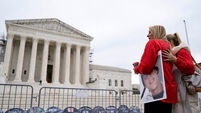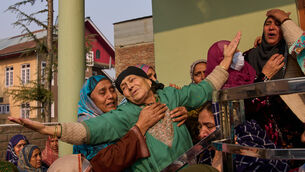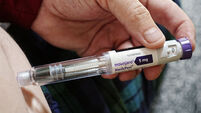Emperor visits site of wartime mass suicide
He also, for the first time, paid his respects to the Koreans who died while fighting for the Japanese in World War II.
On the first trip by a Japanese monarch to a wartime battle site overseas, Akihito and Empress Michiko visited several memorials on this tiny Pacific island honouring Japanese, Americans, local islanders, and Koreans forced to serve in the name of his father, the late Emperor Hirohito.
The two-day royal visit comes amid growing anger in China and the Koreas over what many there see as Japan’s failure to make amends for its brutal wartime past.
Prime Minister Junichiro Koizumi has also stirred up outrage with his visits to a war shrine in Tokyo that is a powerful symbol of Japan’s pre-1945 militarism.
Akihito’s visit to the Korean war dead memorial could be seen as an attempt to ease those tensions, coming as it did after Koreans living in Saipan threatened to stage protests.
Korea was made a Japanese colony in 1910, and 1,000 or so Koreans were brought to the island before the war as labourers.
Families of South Koreans killed in the war welcomed Akihito’s visit to the memorial but said it should be backed up by serious reflection from officials in the Japanese government.
“Because he is a symbolic figure, if he apologised with a sincere heart, I think we can accept it,” Kim Jay-gun, vice president of the Association for the Pacific War Victims, said of Akihito.
Not all Koreans on Saipan felt Akihito’s decision to go to the memorial was enough, however.
“Japan has never really apologised,” said Ryan Kim, a local tour guide.
“There is more for Japan’s emperor to do than go on tours like this.”
The fall of Saipan, now part of the Northern Mariana Islands, a US territory, was a turning point in the war in the Pacific. Its fall allowed American B-29 bombers to pound Japan’s cities, and the neighbouring island of Tinian was used as the launch point for the planes carrying the atomic weapons dropped on Hiroshima and Nagasaki in early August, 1945. The invasion has been called the D-Day of the Pacific.
As many as 55,000 Japanese troops and civilians died after the three-week Operation Forager, which began on June 15, 1944.
Yesterday, Akihito bowed deeply and offered prayers at Banzai Cliff, which owes its name to the shouts of “banzai” - wishing long life to the emperor - by soldiers and civilians who plunged to their deaths.
Saipan has become a popular destination for Japanese tourists, honeymooners and golfers, and the royal couple received a warm welcome.













